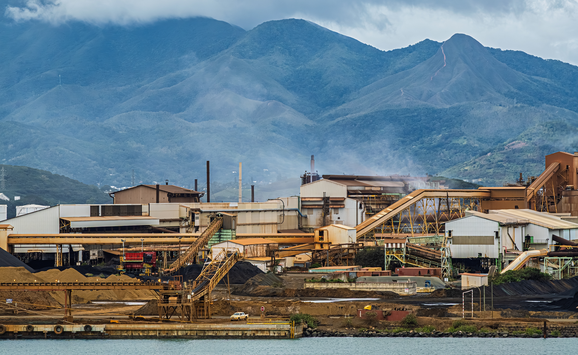The Occupational Safety and Health Administration (OSHA) enters the 1980s as embattled as ever.
- On the legal front, two highly important cases have reached the Supreme Court. One, the benzene case, will test whether the government must explicitly take into account economic benefits and costs in setting standards for hazardous substances. The other—of intense concern to workers and employers but less far reaching in its implications—will decide whether a worker can be disciplined or fired for walking off the job in the face of a real and immediate risk of death or injury.
- In the arena of cancer control, OSHA finally issued its long awaited proposal to simplify and speed up the regulatory process by adopting a comprehensive set of rules for identifying, classifying, and regulating carcinogens. The rules are to take effect April 22, three months after their publication in the Federal Register—unless blocked by court action. The initial reaction from business groups indicated that the proposal will be vigorously contested.
- In Congress, critics have made headway in their efforts to limit inspections of safety and health conditions on small farms and in small businesses, and, for the first time, a bill proposing substantial changes in the law has attracted a wide range of support. Proposed by Senator Schweiker of Pennsylvania, it has been viewed as a symptom of rising discontent and disappointment with OSHA's achievements to date.
Not all of the controversy pits industry against government, however, and OSHA is not without allies. Unions have become increasingly active, sometimes joining the government in suits (as in the benzene case) and sometimes in initiating suits on behalf of workers. Unions are also participating in standard-setting procedures, particularly as sources of technical information. Some unions—notably the Oil, Chemical, and Atomic Workers—have long been deeply involved in safety and health matters, and, since mid-1978, the AFL—CIO has had a separate Occupational Safety and Health Department. Safety and health matters are also becoming more important in collective bargaining. The issues include the right to physical examinations, refusals to work at hazardous jobs, and "rate retention" (maintenance of pay and benefits for workers transferred out of a hazardous job to one customarily paid at a lower rate). There has also been some interest within business and labor in encouraging union—management safety committees.
Thus the future of occupational safety is being shaped in two arenas: (1) that of government regulatory policy and enforcement, and (2) collective bargaining. How the two developments will relate to each other and which will be most decisive in influencing the shape of future workplace improvements will be useful to watch. Over the coming year, however, the impact of the Supreme Court cases and the fate of the new approach to cancer policy will keep governmental regulatory policy in the forefront.

Risks versus benefits: The benzene case. Although some statutes regulating the environment and health call for an assessment of risks and benefits, the Occupational Safety and Health Act does not. Nor does it explicitly require the federal government to consider the economic consequences of its regulations. Nevertheless, in view of the public debate over benefit—cost analysis in regulatory activity generally, it is perhaps not surprising that the economic issue has arisen in the administration of occupational safety and health. In fact, in the ruling that scuttled the benzene standard—the decision that has been appealed to the Supreme Court—a federal court of appeals in New Orleans cited the acceptance of such risk assessment procedures by another agency as evidence of their relevance to workplace regulation.
The secretary of labor has acknowledged the relevance of economic considerations to his decisions even if they are not explicitly mentioned in the law. As he noted in an appendix to the brief filed with the Supreme Court: "... the purpose of the act is not to protect workers by putting employers out of business. Nor is it to cause employers to spend more money than necessary to protect workers." But he said the government does not believe that a rigid benefit—cost formula should be utilized in the standard-setting procedure because it is subject to enormous error and great uncertainty.
The benzene standard was challenged after OSHA issued a regulation to reduce the permissible exposure of workers from ten parts per million (a standard set in 1971) to one part per million (ppm). The earlier standard was based on evidence that exposure to benzene could cause nonmalignant diseases. Later, it was judged to be inadequate, when a study by the National Institute for Occupational Safety and Health indicated that leukemia might also result from exposure to benzene.
In issuing the new standard, the secretary had argued that there is no known safe level of exposure to benzene (or, indeed, to carcinogens in general), and rejected the notion of threshold limit below which no effects are hazardous. He called for reduction to one ppm because it was the lowest feasible level and would succeed in reducing the number of deaths from cancer.
In rejecting the stricter standard, the court stated that the law requires "feasible" standards based on the "best available evidence," not the creation of an absolute risk-free environment. It added: "Until OSHA can provide substantial evidence that the benefits to be achieved by reducing the permissible exposure limits from 10 ppm to one ppm bear a reasonable relationship to the cost imposed by the reduction, It cannot show that the standard is reasonably necessary to provide safe or healthful workplaces."
Later, an opposite position on the economic issue was taken by a federal court of appeals in Washington when it upheld OSHA's standard limiting the exposure of workers to cotton dust. Industry had challenged the standard on several grounds, including the grounds that no benefit—cost assessment had been conducted. The court rejected the industry's contention, holding that the secretary need only establish that the health of workers was threatened and that means to protect them are economically and technologically feasible. The cotton dust standard had been a cause célèbre within the administration because it was issued despite initial opposition from White House inflation fighters, who argued that engineering controls were unnecessary and too costly and that less expensive respirators would have been adequate.
Thus, OSHA believes that what is at stake in the Supreme Court case is not simply the benzene standard, which is surely important in itself, but also the entire rationale for the issuance of standards governing the exposure of workers to cancer-causing agents. (At the beginning of the year litigation was also pending on OSHA's lead and arsenic standards.)

The new approach to carcinogens. Frustration over the slow pace of its program to control carcinogens lies behind OSHA's new comprehensive approach. In its first decade, OSHA was able to set standards on only twenty carcinogens. Under the new approach, it hopes to regulate ten substances a year—out of some 500 chemicals suspected of being carcinogenic.
The speedup would be achieved by obtaining agreement on a set of rules that will apply to all cancer-causing substances. Heretofore, the government had to draw up new definitions, rules, and procedures for each substance, and the same battles had to be waged time and again. With procedural delays eliminated, the deliberations can turn to the scientific questions.
Potential carcinogens in the workplace will be identified and classified into two categories on the basis of human studies and experimental tests in mice and other mammals.
Chemicals that are found to cause cancer in humans or in test animals will be classified in category 1. The exposure of workers to chemicals in this category will be reduced to "the lowest feasible level."
If substitutes are available, no exposure may be permitted. Chemicals for which evidence is only suggestive—category 2—will undergo further testing and may be covered by less stringent standards limiting worker exposure. If this new approach goes into effect, OSHA hopes that future arguments will focus on two questions: Has the substance been classified into its correct category, and has the appropriate exposure limit been set? But even in this streamlined mode, the lapse of time between proposing a standard and putting it into effect may still take up to a year.

The worker's dilemma. Whether an employer can fire or discipline a worker who refuses to carry out a task because it might put him in real and immediate danger of death or injury is a very "iffy" question. Courts have said yes in one case and no in another—and the controversy has gone to the U.S. Supreme Court for resolution.
The Occupational Safety and Health Act provides a procedure for dealing with situations of "imminent danger." The steps: An employee notifies the secretary of labor, who, if persuaded of the merits of the complaint, may order an inspector into the plant. If the inspector thinks immediate action is necessary, he or she must recommend that injunctive relief be obtained through the courts. This process is much faster than formal channels, but it does not cover immediate emergencies. Suppose there is no time or opportunity to go through this procedure. Must the employee expose himself to what he considers unreasonable hazards while waiting for an inspector to arrive?
The secretary of labor concluded that the worker's right to refuse to work in the face of immediate danger is implicit in the law and issued a regulation limiting the right of employers, under carefully defined circumstances, to discipline an employee who refuses to work in good faith.
Companies attacked the regulation, arguing among other points that to permit workers to walk off the job in the face of hazardous work is akin to legalizing "striking with pay," a notion that had been explicitly rejected by Congress.
In major court tests of the imminent danger issue, the score is one to one.
In the case of a construction worker who was discharged for walking off the job, an Atlanta court dismissed the secretary's argument, pointing out that nowhere does the Occupational Safety and Health Act give the worker the right to decide unilaterally whether a job is unsafe. The discharge was upheld on appeal.
But in a different case, a court of appeals in Ohio upheld the right of maintenance workers to refuse to follow an order from a supervisor on grounds that it put them into imminent danger and was contrary to company policy. The court noted that nothing in the law requires a worker to choose between his life and his job and said the regulation is "a reasonable exercise of the Secretary's authority." It noted further that Congress put great reliance on employee assistance in enforcing the act because "even an army of inspectors could not keep America's workplaces safe." It said it based its judgment on what it believed the legislature would have done regarding a problem that was neither discussed nor contemplated. The Supreme Court, which had refused to hear the case of the construction worker, has agreed to hear the second case during this session.

Doubts and data. One of OSHA's initial objectives was to obtain better data because there was so little confidence in the rather spotty information on worker safety and health that had been assembled over the years. The Bureau of Labor Statistics was called on to provide a systematic and comprehensive data system through annual surveys (which now cover 285,000 establishments with more than ten employees in the private sector), and it has provided some general clues over the years about the prevalence of occupational injuries, illnesses, and fatalities. The 1979 report showed, for example, that during the previous year one in eleven workers in the private economy experienced a job-related injury or illness, and an average of sixteen days of work are lost because of illness or injury that is serious enough to keep a worker off the job. Injury and illness rates by industry have been documented, and so on.
But the picture is still murky. To what extent are changes in rates affected by changes in employment and economic activity? Since many occupational illnesses are latent for years before observable symptoms develop, how good can data be on current illnesses? Since the government exempted firms with ten or fewer employees in its effort to reduce the burden of paperwork on small businesses, are figures skewed one way or another? At the midwinter meeting of the Industrial Relations Research Association there was also discussion of the differences in the number of deaths listed in BLS reports of fatalities and those compiled from worker's compensation and other sources. Similarly, sample studies of injury and illness data from other sources have led to inferences that there may be considerable underreporting in BLS surveys. Until such discrepancies are resolved, doubts will persist on the reliability of the data.
Thus, while the outcome of court cases and regulatory innovations will directly affect the operations of OSHA, much of the underlying concern about OSHA's performance seems likely to continue for some time. Those who search for definitive answers to the question of whether OSHA is succeeding in reducing the number of accidents and illnesses—and at what cost—will continue to be frustrated by the lack of conclusive data. Indeed, given the complexity of the problems, one wonders whether statistics will ever answer most of the questions.





